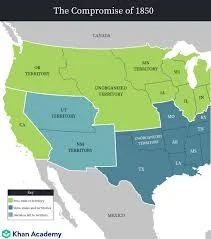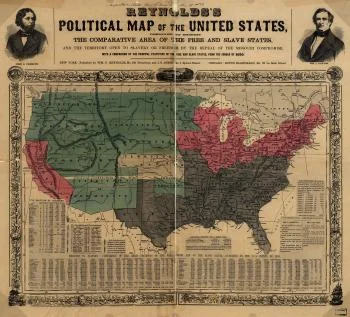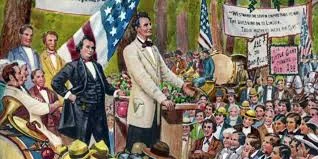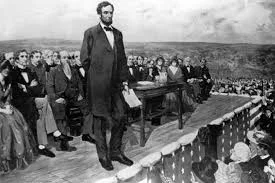-
 A series of laws aimed at keeping balance between free and slave states. California became a free state, and the Fugitive Slave Act forced citizens to return escaped enslaved people.
A series of laws aimed at keeping balance between free and slave states. California became a free state, and the Fugitive Slave Act forced citizens to return escaped enslaved people.
The North grew angry about enforcing slavery laws, while the South demanded their rights be protected — deepening the divide. -
-
 Allowed people in Kansas and Nebraska to vote on whether to allow slavery.
Allowed people in Kansas and Nebraska to vote on whether to allow slavery.
This repealed the Missouri Compromise and caused violent conflict between pro-slavery and anti-slavery settlers. -
 Fighting broke out between pro-slavery and anti-slavery groups in Kansas after the Kansas-Nebraska Act.
Fighting broke out between pro-slavery and anti-slavery groups in Kansas after the Kansas-Nebraska Act.
The violence showed that compromise on slavery was failing and that armed conflict was coming. -
 Southern Congressman Preston Brooks attacked Senator Charles Sumner with a cane after Sumner gave an anti-slavery speech.
Southern Congressman Preston Brooks attacked Senator Charles Sumner with a cane after Sumner gave an anti-slavery speech.
The brutal beating symbolized the growing hatred between North and South and shocked the nation. -
 The Supreme Court ruled that African Americans were not citizens and that Congress couldn’t ban slavery in the territories.
The Supreme Court ruled that African Americans were not citizens and that Congress couldn’t ban slavery in the territories.
Northerners were outraged, believing the government was controlled by pro-slavery forces. -
 Abraham Lincoln and Stephen Douglas debated slavery’s expansion during their Illinois Senate race.
Abraham Lincoln and Stephen Douglas debated slavery’s expansion during their Illinois Senate race.
Lincoln’s strong anti-slavery arguments made him nationally famous and angered the South. -
 Abolitionist John Brown led an attack on a U.S. arsenal, hoping to start a slave revolt.
Abolitionist John Brown led an attack on a U.S. arsenal, hoping to start a slave revolt.
The failed raid made Brown a hero in the North and a terrorist in the South, worsening tensions. -
 Abraham Lincoln won the presidency without any Southern electoral votes.
Abraham Lincoln won the presidency without any Southern electoral votes.
The South felt powerless and began seceding from the Union, leading directly to the Civil War.